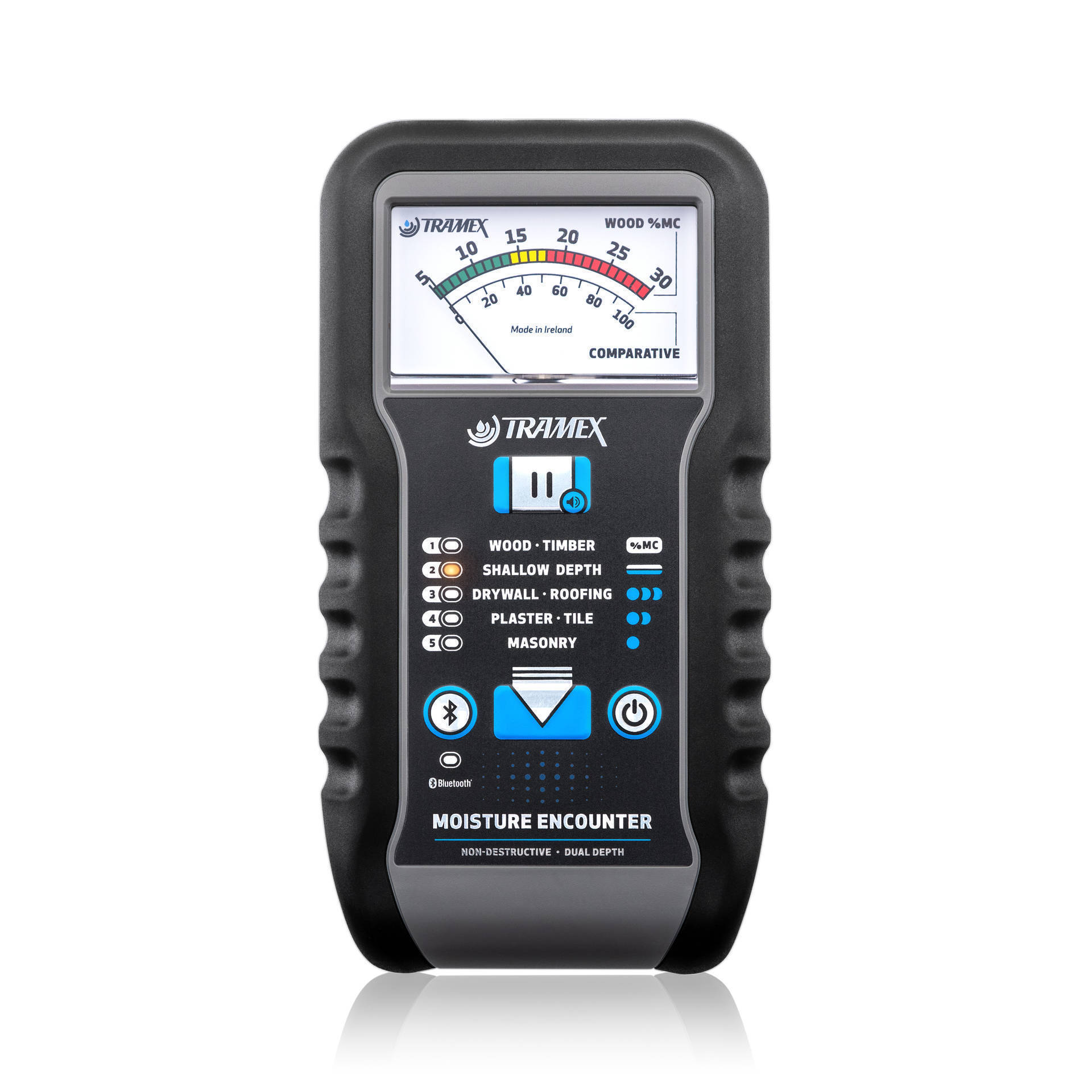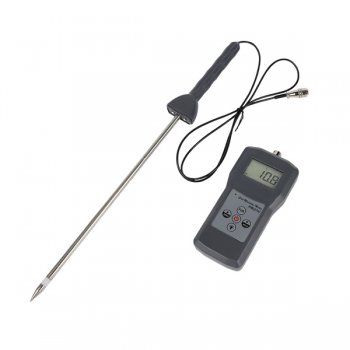Explore the World of Dampness Meters: Whatever You Need to Know
In the realm of wetness meters exists a world of precision and usefulness that often goes undetected. Recognizing just how moisture meters operate, the different kinds available, and their varied usages can shed light on their relevance in making certain top quality and effectiveness.
How Dampness Meters Work
Dampness meters operate by measuring the electric conductivity or capacitance of materials to establish the moisture web content present - Moisture Meter. These meters are important devices across numerous markets, consisting of agriculture, woodworking, and building and construction. By making use of different approaches such as pin-type or pinless innovation, moisture meters supply exact readings that assist professionals make educated choices
Pin-type dampness meters function by putting the sharp pins into the material being evaluated. On the other hand, pinless wetness meters make use of electro-magnetic signals to check a bigger location without creating any damages to the product's surface area.
Despite the approach made use of, dampness meters play an important function in protecting against concerns such as mold development, structural damages, or item flaws triggered by excess wetness. Comprehending exactly how these meters job is important for guaranteeing the quality and integrity of materials in numerous applications.
Sorts Of Dampness Meters
Provided the critical role dampness meters play in different industries, it is important to recognize the various types readily available to specialists for precisely evaluating dampness degrees. There are mainly 2 primary types of dampness meters: pin-type and pinless moisture meters.
Pin-type wetness meters use 2 pins that are placed into the material being tested to gauge the electrical resistance in between them. This technique is generally utilized for wood, drywall, and various other building products. Pin-type meters provide exact readings at certain depths, making them excellent for determining dampness gradients.
On the various other hand, pinless moisture meters make use of electromagnetic sensing unit plates to scan a larger location of the material without triggering any damage. This kind appropriates for quickly scanning big locations and is frequently made use of for flooring, wall surfaces, and ceilings. Pinless meters are practical for taking analyses on finished surfaces without leaving any kind of visible marks.
Both types of dampness meters have their advantages and are selected based upon the specific needs of the job available. Recognizing the differences between these kinds is crucial for experts to make exact dampness assessments.
Applications Across Industries
Building and construction experts count on wetness meters to analyze the wetness degrees in building products like drywall, timber, and concrete, which is crucial for keeping structural stability and stopping issues like rot or mold and mildew. The floor covering industry uses dampness meters to measure the wetness web content in subfloors before setting up numerous floor coverings, protecting against costly damages due to excess dampness. In the food sector, moisture meters are utilized to check and control moisture levels in products such as grains, nuts, and dried out fruits to keep quality and quality.
Tips for Using Wetness Meters
When gauging the moisture material in different products,Utilize the wetness meter's calibration settings to guarantee precise readings. Calibration is important for the proper functioning of a moisture meter. Prior to each use, it is recommended to check and adjust the calibration setups according to the particular material being examined. Additionally, see to it the meter is set to the appropriate wetness range for the material you are measuring to obtain the most precise outcomes.

When making use of a pin-type dampness meter, put the pins to the ideal deepness advised for the product being checked. This makes certain that the dampness analyses are drawn from the correct depth within the product, giving an extra exact depiction of its wetness material. For pinless moisture meters, remember to maintain correct call with the product's surface area to get trusted analyses.

Regularly examine and replace the batteries in your dampness meter to protect against unreliable readings as a result of reduced power. Shop the meter in a dry and secure location when not in use to lengthen its lifespan and keep its accuracy. By adhering to these ideas, you can make the most of the efficiency of your moisture meter and get exact moisture material measurements across various materials.

Upkeep and Calibration
To make certain the accuracy of wetness material dimensions, routine maintenance and calibration of the wetness meter are vital action in its correct functioning. Upkeep involves maintaining the moisture meter cost-free and tidy from debris that can affect its analyses. It is essential to adhere to the producer's standards for cleaning up to recommended you read stop damage to the tool. Furthermore, normal calibration is necessary to verify the accuracy of the analyses. Calibration adjusts the wetness meter to ensure that it supplies dependable and constant results.
Calibration should be executed periodically, particularly if the dampness meter is made use of frequently or in crucial applications where exact dimensions are called for. Many moisture meters come Your Domain Name with calibration tools or can be calibrated by expert solutions - Moisture Meter. It is advised to keep a log of calibration dates and results to track the performance of the wetness meter gradually. By adjusting the wetness and preserving meter consistently, customers can rely on the precision of the dampness material measurements acquired.
Verdict
Finally, wetness meters play an important function in various sectors by properly gauging the wetness content of products. Comprehending how these tools function, the different kinds offered, and proper upkeep and calibration are necessary for acquiring dependable outcomes. Whether in farming, building and construction, or production, the use of dampness meters helps make certain quality assurance and performance in processes.
Building and construction experts count on moisture meters to analyze the moisture degrees in building materials like wood, drywall, and concrete, which is essential for preserving architectural stability and protecting against issues like rot or mold and mildew. The floor covering go to the website industry utilizes wetness meters to gauge the moisture material in subfloors prior to installing various flooring treatments, preventing expensive problems due to excess dampness.Utilize the wetness meter's calibration setups to make certain accurate readings when determining the dampness web content in various materials. By complying with these pointers, you can optimize the efficiency of your dampness meter and obtain accurate wetness material dimensions throughout various products.
In verdict, moisture meters play an essential function in different markets by properly gauging the dampness web content of products.